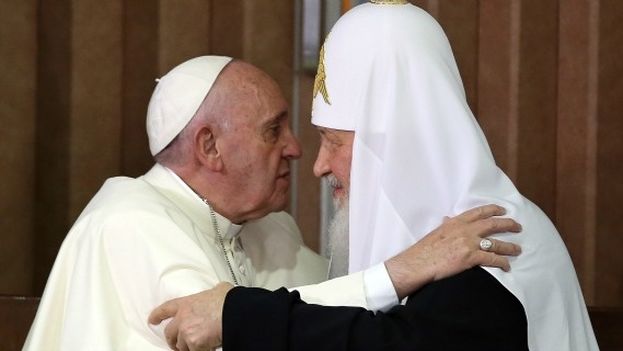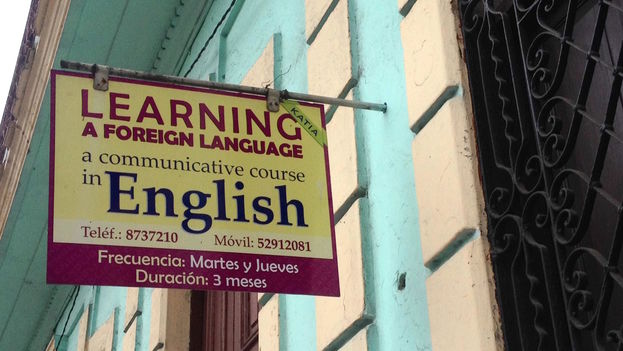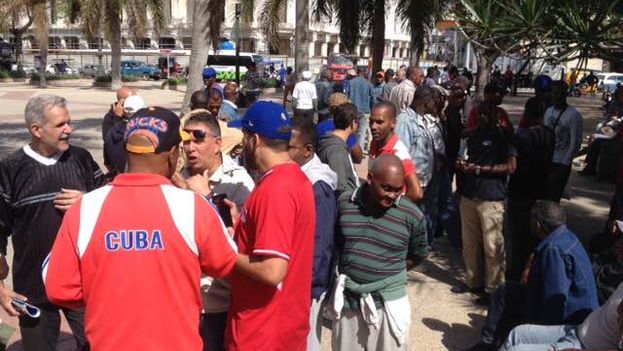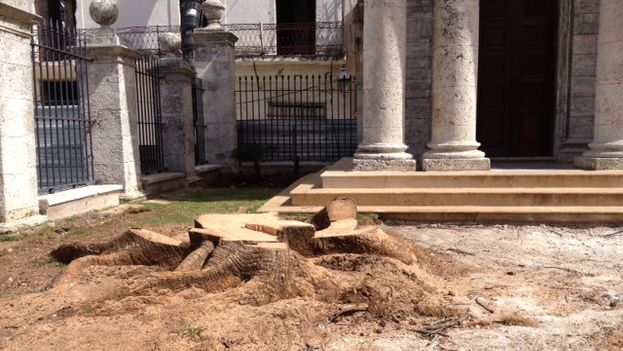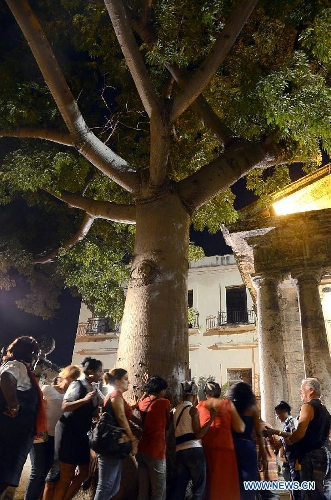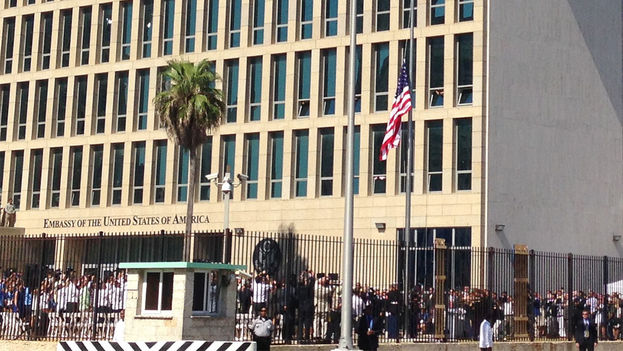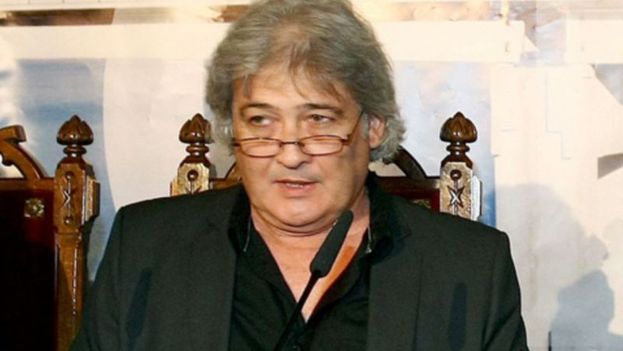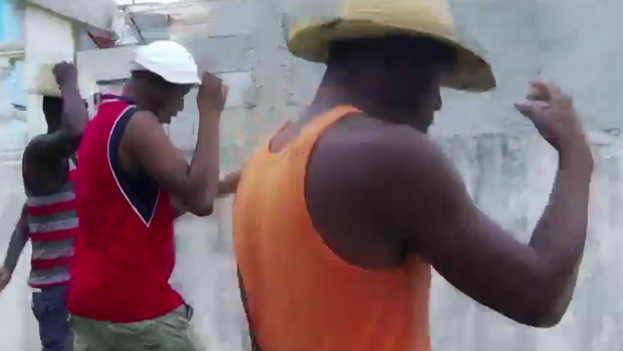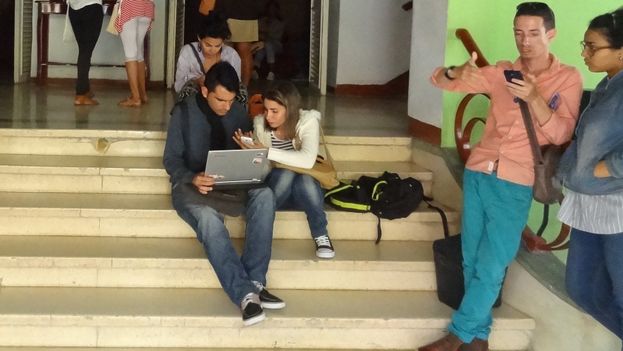
![]() 14ymedio, Sol Garcia Basulto, Camaguey, 14 February 2016 – Perseverance and optimism are Juan Antonio Garcia Borrero’s inseparable allies. Only the perseverance of this movie critic who is passionate about new technologies has allowed him to pull off the First Meeting on Audiovisual Culture and Digital Technologies in Camagüey. The event, censored last November, took place this week (11-12 February) and attracted an audience interested in audiovisual culture.
14ymedio, Sol Garcia Basulto, Camaguey, 14 February 2016 – Perseverance and optimism are Juan Antonio Garcia Borrero’s inseparable allies. Only the perseverance of this movie critic who is passionate about new technologies has allowed him to pull off the First Meeting on Audiovisual Culture and Digital Technologies in Camagüey. The event, censored last November, took place this week (11-12 February) and attracted an audience interested in audiovisual culture.
The meeting was held in The Alley of Miracles and the Alhambra room at the Casablanca cinema, and included lectures, workshops and other activities that show “the innovative potential” in the city, according to Garcia Borrero, who called on the guests to “listen, share and learn.” continue reading
The event set out to make Camagüey a a “stronghold in the creative use of new technologies related to the audiovisual culture.” Among its highlights was a panel moderated by Yoan Pico on the importance of media libraries in the digital revolution, with the presence of Jorge Santos Caballero, Luis Alvarez Alvarez and the host. The discussion concluded that the computerization of Cuban culture is imminent.
Digitizing books for the Net generation, born in the digital age, is the only way to guide young people to a healthy and well-informed consumer environment, the panelists pointed out. In this event they listed some of the aspirations of the project with regards to audiovisual dissemination, among them, “reaching a wider audience with cyber-literacy and new technology resources.”
Participants were able to access a digital media library, from which it was possible to download, from the wireless network in the lobby of the Casablanca cinema, the fifth installment of “A Thousand and one Texts,” a compilation from the researcher and critic Desiderio Navarro. Also available was a compendium with “The 220 best movies in the history of the cinema” selected by the Saiz Brothers Association.
The workshop addressed tricks and ways to get information and distribute audiovisual material in a session on the experiences that made up a part of the technology encounter. The public had the chance to question, criticize and suggest ideas for new digital literacy projects to representatives of the institutions involved: the State telecommunications monopoly, the Youth Club, the Information Faculty at the University of Camagüey, Citmatel, Portal Príncipe, and the Cuban Union of information Scientists.
Also invited were the so-called Wifi instructors, staff prepared to provide information and advice to users in the different Wifi zones that provide wireless access to the internet. These young people explained the importance of their work, which they defined as supporting “the population on a journey away from digital ignorance.”
There was no discussion of the sites censored on national networks, several of them made within Cuba. Some of the attendees believe that the next session of the event should include representatives of other sectors that work in new technologies and not only figures from the cultural audiovisual scene.
However, it seems to have unleashed in Camagüey one of the first battles for “technological emancipation,” as defined by Garcia Borrero, an initiative that “will demand long term collaborations and contributions from people who are immersed in the digital computerization supporting Cuban culture.”
At the end of the event, the manager of this First Meeting on Audiovisual Culture and Digital Technologies wrote in his blog that the dreams raised “now seem elusive,” but “it doesn’t matter how few there are, for now, involved in the enterprise.” In his judgment, “we must continue doing things however shocking that others ignore.”

